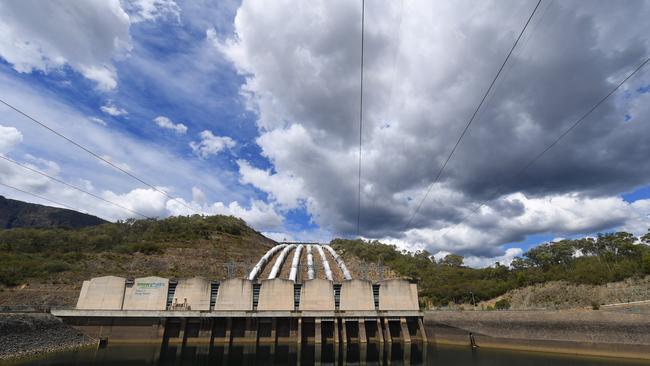Scott Morrison to decide as Snowy 2.0 gets green light
The federal government will be asked to sign off on Snowy Hydro’s $4.5bn pumped hydro project.

The federal government will be asked to sign off on Snowy Hydro’s $4.5 billion pumped hydro project while pushing ahead with its own plan to bankroll new reliable electricity generation, including coal plants, through underwriting contracts and offering loans and grants to power operators.
The board of the government-owned Snowy Hydro last night approved an expansion due to add up to 2000 megawatts of generation on top of its existing 4100 megawatts capacity.
Scott Morrison will be asked to approve a project triumphantly backed by former prime minister Malcolm Turnbull as part of a broader deal in March under which Canberra paid $6bn to win control of the scheme after buying stakes owned by the NSW and Victorian governments.
“After almost two years of rigorous due diligence on every aspect of the project, including detailed financial analysis and ongoing geotechnical drilling, the board is confident Snowy 2.0 is a strong investment for the company,” Snowy Hydro said.
The expansion would only proceed if approved by the government as its sole shareholder.
Energy Minister Angus Taylor — who last month described Snowy 2.0 as a “fundamental part” of Australia’s future energy needs — said it was a significant decision by the company.
“The government will consider this project on its merits — I’m not going to pre-empt that process. As we’ve always said, the Snowy 2.0 needs to stack up,” Mr Taylor said last night. “We will take whatever time is required to do the necessary due diligence and go through our usual processes to ensure we make the right decision.”
Snowy Hydro’s decision to approve the expansion underlines the huge changes in store for the national electricity market as Canberra today prepares to unveil the next phase of its plan to underwrite new electricity generation.
Power operators have been asked to propose projects by January 23 as part of a four-year scheme to be launched today aimed at mending a “market failure” and breaking up the stranglehold of the big three “gentailers” AGL Energy, Origin Energy and EnergyAustralia.
“This program will drive down electricity prices for householders by increasing competition and increasing supply in the market,” Mr Taylor said. “Our program will secure energy for key commercial and industrial customers, increase competition in the market, and lower wholesale prices — which will ensure lower power prices for Australian families and businesses.”
The first phase of the program, which starts in the first quarter of 2019, will offer quickfire financing options allowing the government to move quickly on upgrades to existing generation. Subsequent phases involving more sizeable investments and large chunks of supply will trigger additional financing mechanisms that are yet to be detailed.
Potential project operators will have to detail how new generation meets a range of criteria including the cost of the supply to the national electricity market including any need for upgrades to the shared network and its impact on the reliability and security of the interconnected network.
Mr Taylor has previously insisted the focus on “firm” supply was justified to balance a 250 per cent jump in variable solar and wind output over the next three years. Still, his broader efforts to lower prices will face a stiff test into the new year.
Energy prices continued to rise in 2017-18, with ACT and SA bills up more than 22 per cent, sparking rising hardship claims according to the benchmark report.
The Australian Energy Regulator said energy became less affordable in 2017-18.
South Australian low-income households on standard offers had the least affordable energy in the National Electricity Market — with 11.2 per cent of a low income household’s disposable income being spent on electricity.
The annual report on Compliance and Performance of the Retail Energy Market found the number of disconnections increased by 7172 over the previous year. More electricity customers (1.1 per cent of customers) and gas customers (0.7 per cent) are going into hardship programs offered by retailers.
But fewer people entering hardship programs completed them successfully than in the previous year (22 per cent for electricity and 17 per cent for gas).
The figures came ahead of the collapse of the government’s National Energy Guarantee and Mr Morrison’s sole focus on getting energy prices down.
But in new pricing offers for NEM states’ energy retailers have defied calls to cut prices, largely holding them steady amid rising wholesale energy prices and costs for green schemes and networks.
Companies have cut standard offers for concession and other customers, but they account for just 12 per cent of Australia’s 6.3 million residential customers.
Additional reporting: Andrew White


To join the conversation, please log in. Don't have an account? Register
Join the conversation, you are commenting as Logout